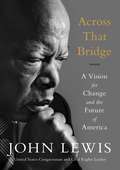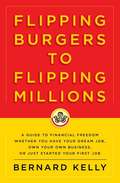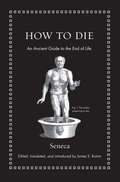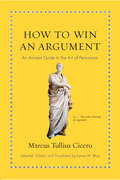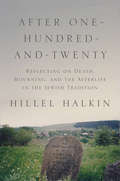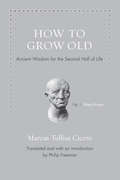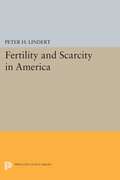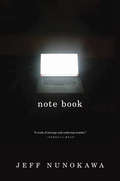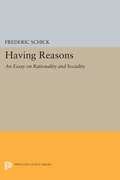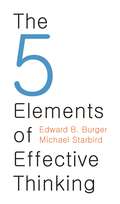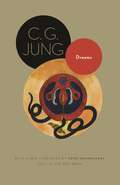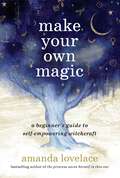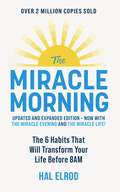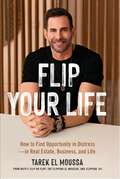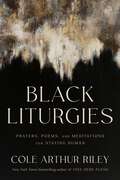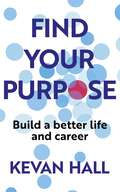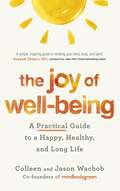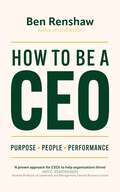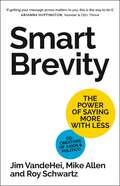- Table View
- List View
Across That Bridge: Life Lessons and a Vision for Change
by John LewisWinner of the NAACP Image Award for Outstanding Literary Work/Biography. In Across That Bridge, Congressman John Lewis draws from his experience as a prominent leader of the Civil Rights Movement to offer timeless wisdom, poignant recollections, and powerful principles for anyone interested in challenging injustices and inspiring real change toward a freer, more peaceful society. The Civil Rights Movement gave rise to the protest culture we know today, and the experiences of leaders like Congressman Lewis, a close confidant to Martin Luther King, Jr., have never been more relevant. Despite more than forty arrests, physical attacks, and serious injuries, John Lewis has remained a devoted advocate of the discipline and philosophy of nonviolence. Now, in an era in which the protest culture he helped forge has resurfaced as a force for change, Lewis' insights have never been more relevant. In this heartfelt book, Lewis explores the contributions that each generation must make to achieve change.
Flipping Burgers to Flipping Millions: A Guide to Financial Freedom Whether You Have Your Dream Job, Own Your Own Business, or Just Started Your First Job
by Bernard KellyAn easy-to-read guide to the four stages of a successful financial lifeBernard Kelly started his professional life cooking French fries at McDonald's. While his first paychecks were modest, he hoped that the small amounts he set aside from each would one day lead to the financial freedom he desired. A few short years later, Kelly's work ethic and dedication have fueled his rise from fry cook to Operations Consultant at McDonald's. At the same time, those early savings have grown into the kind of personal wealth many of us dream of achieving one day. In Flipping Burgers to Flipping Millions, Kelly shares the easy-to-understand principles at the heart of his professional and financial success--ones influenced by his experience working for the most successful restaurant business in the world--and gives you a game plan for how to use them in your own life.Are you just starting your career Perfect. Kelly will introduce you to the the four stages of a successful financial life--Right Now, Quality of Life, Retirement, and Legacy--and explain how to navigate them. Starting a little bit later That's OK too. Kelly will help you figure out how to get back on track on your path toward financial security.Presented in an engaging and jargon-free voice, this book will capture your imagination, change the way you think about money, and show you that financial freedom is possible--not just for other people, but for you.
How to Die: An Ancient Guide to the End of Life
by Seneca James S. RommTimeless wisdom on death and dying from the celebrated Stoic philosopher Seneca"It takes an entire lifetime to learn how to die," wrote the Roman Stoic philosopher Seneca (c. 4 BC–65 AD). He counseled readers to "study death always," and took his own advice, returning to the subject again and again in all his writings, yet he never treated it in a complete work. How to Die gathers in one volume, for the first time, Seneca's remarkable meditations on death and dying. Edited and translated by James S. Romm, How to Die reveals a provocative thinker and dazzling writer who speaks with a startling frankness about the need to accept death or even, under certain conditions, to seek it out. Seneca believed that life is only a journey toward death and that one must rehearse for death throughout life. Here, he tells us how to practice for death, how to die well, and how to understand the role of a good death in a good life. He stresses the universality of death, its importance as life's final rite of passage, and its ability to liberate us from pain, slavery, or political oppression. Featuring beautifully rendered new translations, How to Die also includes an enlightening introduction, notes, the original Latin texts, and an epilogue presenting Tacitus's description of Seneca's grim suicide.
How to Die: An Ancient Guide to the End of Life
by Seneca James S. RommTimeless wisdom on death and dying from the celebrated Stoic philosopher Seneca"It takes an entire lifetime to learn how to die," wrote the Roman Stoic philosopher Seneca (c. 4 BC–65 AD). He counseled readers to "study death always," and took his own advice, returning to the subject again and again in all his writings, yet he never treated it in a complete work. How to Die gathers in one volume, for the first time, Seneca's remarkable meditations on death and dying. Edited and translated by James S. Romm, How to Die reveals a provocative thinker and dazzling writer who speaks with a startling frankness about the need to accept death or even, under certain conditions, to seek it out. Seneca believed that life is only a journey toward death and that one must rehearse for death throughout life. Here, he tells us how to practice for death, how to die well, and how to understand the role of a good death in a good life. He stresses the universality of death, its importance as life's final rite of passage, and its ability to liberate us from pain, slavery, or political oppression. Featuring beautifully rendered new translations, How to Die also includes an enlightening introduction, notes, the original Latin texts, and an epilogue presenting Tacitus's description of Seneca's grim suicide.
How to Win an Argument: An Ancient Guide to the Art of Persuasion
by Marcus Tullius Cicero James M. MayAll of us are faced countless times with the challenge of persuading others, whether we're trying to win a trivial argument with a friend or convince our coworkers about an important decision. Instead of relying on untrained instinct—and often floundering or failing as a result—we’d win more arguments if we learned the timeless art of verbal persuasion, rhetoric. How to Win an Argument gathers the rhetorical wisdom of Cicero, ancient Rome’s greatest orator, from across his works and combines it with passages from his legal and political speeches to show his powerful techniques in action. The result is an enlightening and entertaining practical introduction to the secrets of persuasive speaking and writing—including strategies that are just as effective in today’s offices, schools, courts, and political debates as they were in the Roman forum.How to Win an Argument addresses proof based on rational argumentation, character, and emotion; the parts of a speech; the plain, middle, and grand styles; how to persuade no matter what audience or circumstances you face; and more. Cicero’s words are presented in lively translations, with illuminating introductions; the book also features a brief biography of Cicero, a glossary, suggestions for further reading, and an appendix of the original Latin texts.Astonishingly relevant, this unique anthology of Cicero’s rhetorical and oratorical wisdom will be enjoyed by anyone who ever needs to win arguments and influence people—in other words, all of us.
How to Win an Argument: An Ancient Guide to the Art of Persuasion
by Marcus Tullius Cicero James M. MayAll of us are faced countless times with the challenge of persuading others, whether we're trying to win a trivial argument with a friend or convince our coworkers about an important decision. Instead of relying on untrained instinct—and often floundering or failing as a result—we’d win more arguments if we learned the timeless art of verbal persuasion, rhetoric. How to Win an Argument gathers the rhetorical wisdom of Cicero, ancient Rome’s greatest orator, from across his works and combines it with passages from his legal and political speeches to show his powerful techniques in action. The result is an enlightening and entertaining practical introduction to the secrets of persuasive speaking and writing—including strategies that are just as effective in today’s offices, schools, courts, and political debates as they were in the Roman forum.How to Win an Argument addresses proof based on rational argumentation, character, and emotion; the parts of a speech; the plain, middle, and grand styles; how to persuade no matter what audience or circumstances you face; and more. Cicero’s words are presented in lively translations, with illuminating introductions; the book also features a brief biography of Cicero, a glossary, suggestions for further reading, and an appendix of the original Latin texts.Astonishingly relevant, this unique anthology of Cicero’s rhetorical and oratorical wisdom will be enjoyed by anyone who ever needs to win arguments and influence people—in other words, all of us.
After One-Hundred-and-Twenty: Reflecting on Death, Mourning, and the Afterlife in the Jewish Tradition (PDF)
by Hillel HalkinAfter One-Hundred-and-Twenty provides a richly nuanced and deeply personal look at Jewish attitudes and practices regarding death, mourning, and the afterlife as they have existed and evolved from biblical times to today. Taking its title from the Hebrew and Yiddish blessing to live to a ripe old age—Moses is said to have been 120 years old when he died—the book explores how the Bible's original reticence about an afterlife gave way to views about personal judgment and reward after death, the resurrection of the body, and even reincarnation. It examines Talmudic perspectives on grief, burial, and the afterlife, shows how Jewish approaches to death changed in the Middle Ages with thinkers like Maimonides and in the mystical writings of the Zohar, and delves into such things as the origins of the custom of reciting Kaddish for the deceased and beliefs about encountering the dead in visions and dreams.After One-Hundred-and-Twenty is also Hillel Halkin's eloquent and disarmingly candid reflection on his own mortality, the deaths of those he has known and loved, and the comfort he has and has not derived from Jewish tradition.
After One-Hundred-and-Twenty: Reflecting on Death, Mourning, and the Afterlife in the Jewish Tradition
by Hillel HalkinAfter One-Hundred-and-Twenty provides a richly nuanced and deeply personal look at Jewish attitudes and practices regarding death, mourning, and the afterlife as they have existed and evolved from biblical times to today. Taking its title from the Hebrew and Yiddish blessing to live to a ripe old age—Moses is said to have been 120 years old when he died—the book explores how the Bible's original reticence about an afterlife gave way to views about personal judgment and reward after death, the resurrection of the body, and even reincarnation. It examines Talmudic perspectives on grief, burial, and the afterlife, shows how Jewish approaches to death changed in the Middle Ages with thinkers like Maimonides and in the mystical writings of the Zohar, and delves into such things as the origins of the custom of reciting Kaddish for the deceased and beliefs about encountering the dead in visions and dreams.After One-Hundred-and-Twenty is also Hillel Halkin's eloquent and disarmingly candid reflection on his own mortality, the deaths of those he has known and loved, and the comfort he has and has not derived from Jewish tradition.
How to Grow Old: Ancient Wisdom for the Second Half of Life (Ancient Wisdom for Modern Readers)
by Philip Freeman Marcus Tullius CiceroWorried that old age will inevitably mean losing your libido, your health, and possibly your marbles too? Well, Cicero has some good news for you. In How to Grow Old, the great Roman orator and statesman eloquently describes how you can make the second half of life the best part of all—and why you might discover that reading and gardening are actually far more pleasurable than sex ever was.Filled with timeless wisdom and practical guidance, Cicero's brief, charming classic—written in 44 BC and originally titled On Old Age—has delighted and inspired readers, from Saint Augustine to Thomas Jefferson, for more than two thousand years. Presented here in a lively new translation with an informative new introduction and the original Latin on facing pages, the book directly addresses the greatest fears of growing older and persuasively argues why these worries are greatly exaggerated—or altogether mistaken.Montaigne said Cicero's book "gives one an appetite for growing old." The American founding father John Adams read it repeatedly in his later years. And today its lessons are more relevant than ever in a world obsessed with the futile pursuit of youth.
Fertility and Scarcity in America
by Peter H. LindertScholars have charged population growth with lowering aggregate income per capita, depleting natural resources, reducing the quality of the environment, and causing more unequal distribution of income. Maintaining that the order of these concerns should be reversed, Peter H. Lindert emphasizes the tendency of higher fertility and population growth to heighten economic inequalities. His analysis also improves our knowledge of the ways in which economic developments affect fertility.The author develops an integrated model of fertility behavior featuring an original way of defining and measuring the relative cost of an extra child. U.S. fertility patterns in the twentieth century, he shows, are partially explained by the interplay of a model of intergenerational taste formation and fluctuation in relative child costs. His reinterpretation of patterns in the inequality of schooling and income in America highlights the role of fertility and other demographic forces. From the author's analysis it appears that concern over rapid population growth is more justified on income-distribution grounds than on grounds of effects on average per capita income. In showing that this is so, Professor Lindert describes how families' use of time has changed since the late nineteenth century.Originally published in 1978.The Princeton Legacy Library uses the latest print-on-demand technology to again make available previously out-of-print books from the distinguished backlist of Princeton University Press. These editions preserve the original texts of these important books while presenting them in durable paperback and hardcover editions. The goal of the Princeton Legacy Library is to vastly increase access to the rich scholarly heritage found in the thousands of books published by Princeton University Press since its founding in 1905.
Note Book
by Jeff Nunokawa"The hunger for a feeling of connection that informs most everything I've written flows from a common break in a common heart, one I share with everyone I’ve ever really known."—Note BookEvery single morning since early 2007, Princeton English professor Jeff Nunokawa has posted a brief essay in the Notes section of his Facebook page. Often just a few sentences but never more than a few paragraphs, these compelling literary and personal meditations have raised the Facebook post to an art form, gained thousands of loyal readers, and been featured in the New Yorker. In Note Book, Nunokawa has selected some 250 of the most powerful and memorable of these essays, many accompanied by the snapshots originally posted alongside them. The result is a new kind of literary work for the age of digital and social media, one that reimagines the essay’s efforts, at least since Montaigne, to understand our common condition by trying to understand ourselves.Ranging widely, the essays often begin with a quotation from one of Nunokawa’s favorite writers—George Eliot, Henry James, Gerard Manley Hopkins, W. H. Auden, Robert Frost, or James Merrill, to name a few. At other times, Nunokawa is just as likely to be discussing Joni Mitchell or Spanish soccer striker Fernando Torres.Confessional and moving, enlightening and entertaining, Note Book is ultimately a profound reflection on loss and loneliness—and on the compensations that might be found through writing, literature, and connecting to others through social media.
Note Book
by Jeff Nunokawa"The hunger for a feeling of connection that informs most everything I've written flows from a common break in a common heart, one I share with everyone I’ve ever really known."—Note BookEvery single morning since early 2007, Princeton English professor Jeff Nunokawa has posted a brief essay in the Notes section of his Facebook page. Often just a few sentences but never more than a few paragraphs, these compelling literary and personal meditations have raised the Facebook post to an art form, gained thousands of loyal readers, and been featured in the New Yorker. In Note Book, Nunokawa has selected some 250 of the most powerful and memorable of these essays, many accompanied by the snapshots originally posted alongside them. The result is a new kind of literary work for the age of digital and social media, one that reimagines the essay’s efforts, at least since Montaigne, to understand our common condition by trying to understand ourselves.Ranging widely, the essays often begin with a quotation from one of Nunokawa’s favorite writers—George Eliot, Henry James, Gerard Manley Hopkins, W. H. Auden, Robert Frost, or James Merrill, to name a few. At other times, Nunokawa is just as likely to be discussing Joni Mitchell or Spanish soccer striker Fernando Torres.Confessional and moving, enlightening and entertaining, Note Book is ultimately a profound reflection on loss and loneliness—and on the compensations that might be found through writing, literature, and connecting to others through social media.
Having Reasons: An Essay on Rationality and Sociality
by Frederic SchickThis important contribution to choice theory examines two theories of motivation and two kinds of explanation of behavior that they support.Originally published in 1984.The Princeton Legacy Library uses the latest print-on-demand technology to again make available previously out-of-print books from the distinguished backlist of Princeton University Press. These editions preserve the original texts of these important books while presenting them in durable paperback and hardcover editions. The goal of the Princeton Legacy Library is to vastly increase access to the rich scholarly heritage found in the thousands of books published by Princeton University Press since its founding in 1905.
The 5 Elements of Effective Thinking
by Edward B. Burger Michael StarbirdThe 5 Elements of Effective Thinking presents practical, lively, and inspiring ways for you to become more successful through better thinking. The idea is simple: You can learn how to think far better by adopting specific strategies. Brilliant people aren't a special breed--they just use their minds differently. By using the straightforward and thought-provoking techniques in The 5 Elements of Effective Thinking, you will regularly find imaginative solutions to difficult challenges, and you will discover new ways of looking at your world and yourself--revealing previously hidden opportunities. The book offers real-life stories, explicit action items, and concrete methods that allow you to attain a deeper understanding of any issue, exploit the power of failure as a step toward success, develop a habit of creating probing questions, see the world of ideas as an ever-flowing stream of thought, and embrace the uplifting reality that we are all capable of change. No matter who you are, the practical mind-sets introduced in the book will empower you to realize any goal in a more creative, intelligent, and effective manner. Filled with engaging examples that unlock truths about thinking in every walk of life, The 5 Elements of Effective Thinking is written for all who want to reach their fullest potential--including students, parents, teachers, businesspeople, professionals, athletes, artists, leaders, and lifelong learners. Whenever you are stuck, need a new idea, or want to learn and grow, The 5 Elements of Effective Thinking will inspire and guide you on your way. To share thinking stories, go to: http://5elementsofthinking.wordpress.com
The 5 Elements of Effective Thinking
by Edward B. Burger Michael StarbirdThe 5 Elements of Effective Thinking presents practical, lively, and inspiring ways for you to become more successful through better thinking. The idea is simple: You can learn how to think far better by adopting specific strategies. Brilliant people aren't a special breed--they just use their minds differently. By using the straightforward and thought-provoking techniques in The 5 Elements of Effective Thinking, you will regularly find imaginative solutions to difficult challenges, and you will discover new ways of looking at your world and yourself--revealing previously hidden opportunities. The book offers real-life stories, explicit action items, and concrete methods that allow you to attain a deeper understanding of any issue, exploit the power of failure as a step toward success, develop a habit of creating probing questions, see the world of ideas as an ever-flowing stream of thought, and embrace the uplifting reality that we are all capable of change. No matter who you are, the practical mind-sets introduced in the book will empower you to realize any goal in a more creative, intelligent, and effective manner. Filled with engaging examples that unlock truths about thinking in every walk of life, The 5 Elements of Effective Thinking is written for all who want to reach their fullest potential--including students, parents, teachers, businesspeople, professionals, athletes, artists, leaders, and lifelong learners. Whenever you are stuck, need a new idea, or want to learn and grow, The 5 Elements of Effective Thinking will inspire and guide you on your way. To share thinking stories, go to: http://5elementsofthinking.wordpress.com
Dreams: (From Volumes 4, 8, 12, and 16 of the Collected Works of C. G. Jung)
by C. G. Jung R. F.C. Hull Sonu ShamdasaniDream analysis is a distinctive and foundational part of analytical psychology, the school of psychology founded by C. G. Jung and his successors. This volume collects Jung's most insightful contributions to the study of dreams and their meaning. The essays in this volume, written by Jung between 1909 and 1945, reveal Jung's most essential views about dreaming--especially regarding the relationship between language and dream. Through these studies, Jung grew to understand that dreams are themselves a language, a language through which the soul communicates with the body. The essays included are "The Analysis of Dreams," "On the Significance of Number Dreams," "General Aspects of Dream Psychology," "On the Nature of Dreams," "The Practical Use of Dream Analysis," and "Individual Dream Symbolism in Relation to Alchemy" (complete with illustrations). New to this edition is a foreword by Sonu Shamdasani, Philemon Professor of Jung History at University College London.
Dreams: (From Volumes 4, 8, 12, and 16 of the Collected Works of C. G. Jung)
by C. G. Jung R. F.C. Hull Sonu ShamdasaniDream analysis is a distinctive and foundational part of analytical psychology, the school of psychology founded by C. G. Jung and his successors. This volume collects Jung's most insightful contributions to the study of dreams and their meaning. The essays in this volume, written by Jung between 1909 and 1945, reveal Jung's most essential views about dreaming--especially regarding the relationship between language and dream. Through these studies, Jung grew to understand that dreams are themselves a language, a language through which the soul communicates with the body. The essays included are "The Analysis of Dreams," "On the Significance of Number Dreams," "General Aspects of Dream Psychology," "On the Nature of Dreams," "The Practical Use of Dream Analysis," and "Individual Dream Symbolism in Relation to Alchemy" (complete with illustrations). New to this edition is a foreword by Sonu Shamdasani, Philemon Professor of Jung History at University College London.
Make Your Own Magic
by Amanda LovelaceFrom the bestselling author of the princess saves herself in this one comes an accessible guide to welcoming magic into your life, perfect for beginner witches and the magic-curious alike.As witchcraft grows ever more popular, there are countless introductions and paths into magical practice to choose from - so many that you might not know where to begin. When you're just getting started, it's easy to be intimidated or discouraged or to feel that there's no place for you in the craft.With make your own magic, amanda lovelace aims to change that. This inviting beginner's guide shows that magic doesn't have to be fancy, time-consuming, or one-size-fits-all. It introduces the tenets of witchcraft so that you can develop your own practice and relationship with magic in whatever way works for you. With simple explanations, twenty all-new inspiring poems, words of encouragement, magical journaling prompts, and more, this book sweeps away the gatekeeping and offers you the tools needed to begin building a strong, long-lasting practice focused on self-love.
The Miracle Morning (Updated and Expanded Edition): The 6 Habits That Will Transform Your Life Before 8AM
by Hal ElrodStart waking up to your full potential every single day with the updated and expanded edition of the groundbreaking book with more than 2 million copies sold.Getting everything you want out of life isn't about doing more. It's about becoming more. Hal Elrod and The Miracle Morning have helped millions of people become the person they need to be to create the life they've always wanted. Now, it's your turn.Hal's revolutionary S.A.V.E.R.S. method is a simple, effective step-by-step process to transform your life in as little as six minutes per day:* Silence: Reduce stress and improve mental clarity by beginning each day with peaceful, purposeful quiet* Affirmations: Reprogram your mind to overcome any fears or beliefs that are limiting your potential or causing you to suffer* Visualization: Experience the power of mentally rehearsing yourself showing up at your best each day* Exercise: Boost your mental and physical energy in as little as 60 seconds* Reading: Acquire knowledge and expand your abilities by learning from experts* Scribing: Keep a journal to deepen gratitude, gain insights, track progress, and increase your productivity by getting clear on your top prioritiesThis updated and expanded edition has more than 40 pages of new content, including:The Miracle Evening: Optimize your bedtime and sleep to wake up every day feeling refreshed and energized for your Miracle MorningThe Miracle Life: Begin your path to inner freedom so you can truly be happy and learn to love the life you have while you create the life you want
Flip Your Life: How to Find Opportunity in Distress - in Real Estate, Business, and Life
by Tarek El MoussaTarek El Moussa - known to millions as the star of Flip or Flop, Flipping 101 with Tarek El Moussa and The Flipping El Moussas - shows how the principles that make him such a successful house flipper can also be applied to improving your personal life.Tarek El Moussa is everywhere. With 1.3 million engaged social media followers and numerous hit HGTV shows, it will surprise fans to learn that it wasn't an easy road to the top. After seeing a promising baseball career end before it even began with a devastating shoulder injury, a young and aimless Tarek had no clue what he wanted to do with his life. So, he drank. Finally, one night, Tarek decided not to drink, and instead stepped outside to look at the night sky for the first time since he could remember. That was when he decided his life needed to change - a lot. And fast. In Flip Your Life, Tarek uses his story - that of a lost young man trying to find his way in the world - to take you through the steps that will help you achieve your own goals. Whether in real estate or life, Tarek reveals his proven four-step process: Evaluate Emulate Renovate DuplicateTarek shows you how to identify your goals, find the people to help you accomplish them, and then make those first steps with confidence. Along the way, he reveals the man behind the beloved HGTV persona, and sheds light for the first time on pivotal moments in his life, from the very early days of his real estate career, filming Flip or Flop with his ex-wife Christina, to his earth-shattering bouts with thyroid and testicular cancer, a crippling back injury, his subsequent addiction to steroids, and his long and hard-earned path to recovery. A natural coach and teacher, Tarek gives us a candid look behind the camera, making Flip Your Life a practical, easy-to-use guide to help you turn your life into a focused, meaningful, hugely fulfilling success story.
Black Liturgies: Prayers, poems and meditations for staying human
by Cole Arthur RileyIn the summer of 2020, Cole Arthur Riley was desperate for a spirituality she could trust. Amidst ongoing national racial violence, the isolation of the pandemic, and a surge of anti-Black rhetoric in many Christian spaces, she began dreaming of a harbour for a more human, more liberating expression of faith. She went on to create Black Liturgies, a digital project that connects spiritual practice with Black emotion, memory, and the Black body.In this book, she deepens the work of that project, bringing together new prayers, letters, poetry, meditation questions, breath practice, and the writings of Black literary ancestors to offer 43 liturgies that can be practised individually or as a community. With a poet's touch and a sensitivity that has made her one of the most important spiritual voices at work today, Riley invites readers to reflect on their own experiences of wonder, rest, rage, and repair, while also including liturgies for holidays like Lent, Advent and Mother's Day.For those healing from spiritual spaces that were more violent than loving; for those who have escaped the trauma of white Christian nationalism, religious homophobia, and transphobia; for anyone asking what it means to be human in a world of both beauty and terror; Black Liturgies is a work of healing and liberation, and a vision for what might be.
Find Your Purpose: Build a Better Life and Career
by Kevan HallDo you ever feel your life and career is out of balance, or that there must be more to it all than this?If you want to take control, this book will help you systematically design the next stage of your life and career to maximise your own happiness and fulfilment. FIND YOUR PURPOSE will:· help you clarify your values, strengths and purpose and understand what brings meaning for you personally· introduce principles and techniques for actively designing happiness and fulfilment · show you how to apply these principles in your work, relationships, leisure and learning· introduce systematic planning tools into all areas of your life - even those areas you might not expect By the end of the book you will have created a practical action plan for redesigning the next stage of your life and career, whether that be a sidestep, a side hustle or a complete step change.Based on workshops and research from a highly experienced training team, these proven tools will enable you to identify the unique portfolio of activities that is likely to make you most happy and fulfilled.The days of a linear career progression are gone. Shape your life and work to suit the true you and enjoy your personal breakthrough.
The Joy of Well-Being: A Practical Guide to a Happy, Healthy, and Long Life
by Jason Wachob Colleen WachobOn your journey toward a more health-conscious life, you've likely been bombarded by an overwhelming amount of information-from the Kardashian-like wellness influencers who (unrealistically) insist upon sustainably sourced Epsom salt baths every night, to the elite longevity optimizers who measure their lactate levels after a workout. The echo chamber of the internet, and social media algorithms that favor polarizing opinions to drive views and engagement, have hijacked our understanding of health. No matter which corner of the wellness world you inhabit, our social feeds are filled with advice that presumes we all have the same amount of time, money, and resources. In this saturated landscape, how can you avoid the potential scams and dodge the doctors-turned-celebrities to find what really works for you?Over the past decade, Colleen and Jason Wachob, co-founders of mindbodygreen, have cultivated a leading wellness lifestyle media brand for everyone seeking to cut through this noise, and live a happier, healthier, and greener lifestyle. The Joy of Well-Being is a distillation of almost fifteen years of this experience on the forefront of the well-being conversation: they've done the legwork so you don't have to. The Wachobs are a product of their mentors and years of working with hundreds of the world's most brilliant well-being minds, PhDs, MDs, therapists, movement specialists, spiritual leaders, and journalists. They've developed ways to discern meaningful points of information amidst the chaos, an act they consider both a science and an art. The Joy of Well-Being is more than a book, it's a reawakening, marking a crucial shift away from the do-this-then-do-that paradigm, to cultivating a joyful lifestyle that centers each individual, and their own health and happiness. True well-being isn't something you chase, it is something you weave together, as each new day presents an opportunity to make choices that support feeling good in your body, in your relationships, and in your life.
How To Be A CEO: Purpose. People. Performance.
by Ben RenshawThe haloed CEO role is a rarified position which takes a special combination of the right mindset, skillset and tools to succeed. Many people aspire to the elevated heights of a CEO and crave the experience and versatility of the best in business - yet few have a clear pathway to develop their skills and put themselves in the picture for a big leadership role. Now, in How to be a CEO, the experienced executive coach Ben Renshaw has conducted extensive research with CEOs from small, mid-size and large companies, Executive Committee members who work for CEOs and renowned Professors of Leadership, to distill the vital essence of what it takes to become a great CEO.In recent years the world of work has experienced unprecedented change causing organizations, leaders, teams and individuals to rethink about what work means and what they want. It has given everyone the license to ask questions about how to work in better ways and to expect straight answers from relevant stakeholders. Never has it been more important to equip aspiring leaders with the skills to succeed, as well as helping existing CEOs build robust succession plans to ensure the sustainability of their organizations.How to be a CEO outlines a compelling journey to leadership greatness. Based on a simple 3P Model: Purpose, People & Performance it provides a practical guide to accelerate leadership development for those who want to be at the front of evolution in the uncertain world of work. The book will help unlock your thinking about what you stand for as a leader and the impact that you want to have. It will challenge you to leverage your strengths and address your development opportunities. It will invite the reader to create their own framework for becoming the best CEO candidate they can, to equip them for the role if they are in contention, and to challenge leaders at all levels to raise their game and lead greatly. All the leadership answers in one slim volume.
Smart Brevity: The Power of Saying More with Less
by Roy Schwartz Mike Allen Jim VandeHeiA WALL STREET JOURNAL AND USA TODAY NATIONAL BESTSELLER!Brevity is confidence. Length is fear. This is the guiding principle of Smart Brevity, a communication formula built by Axios journalists to prioritize essential news and information, explain its impact and deliver it in a concise and visual format. Now, the co-founders of Axios have created an essential guide for communicating effectively and efficiently using Smart Brevity - think Strunk and White's Elements of Style for the digital age.In SMART BREVITY: The Power of Saying More with Less, Axios co-founders Jim VandeHei, Mike Allen, and Roy Schwartz teach readers how to say more with less in virtually any format. They also share communications lessons learned from their decades of experience in media, business and communications.
